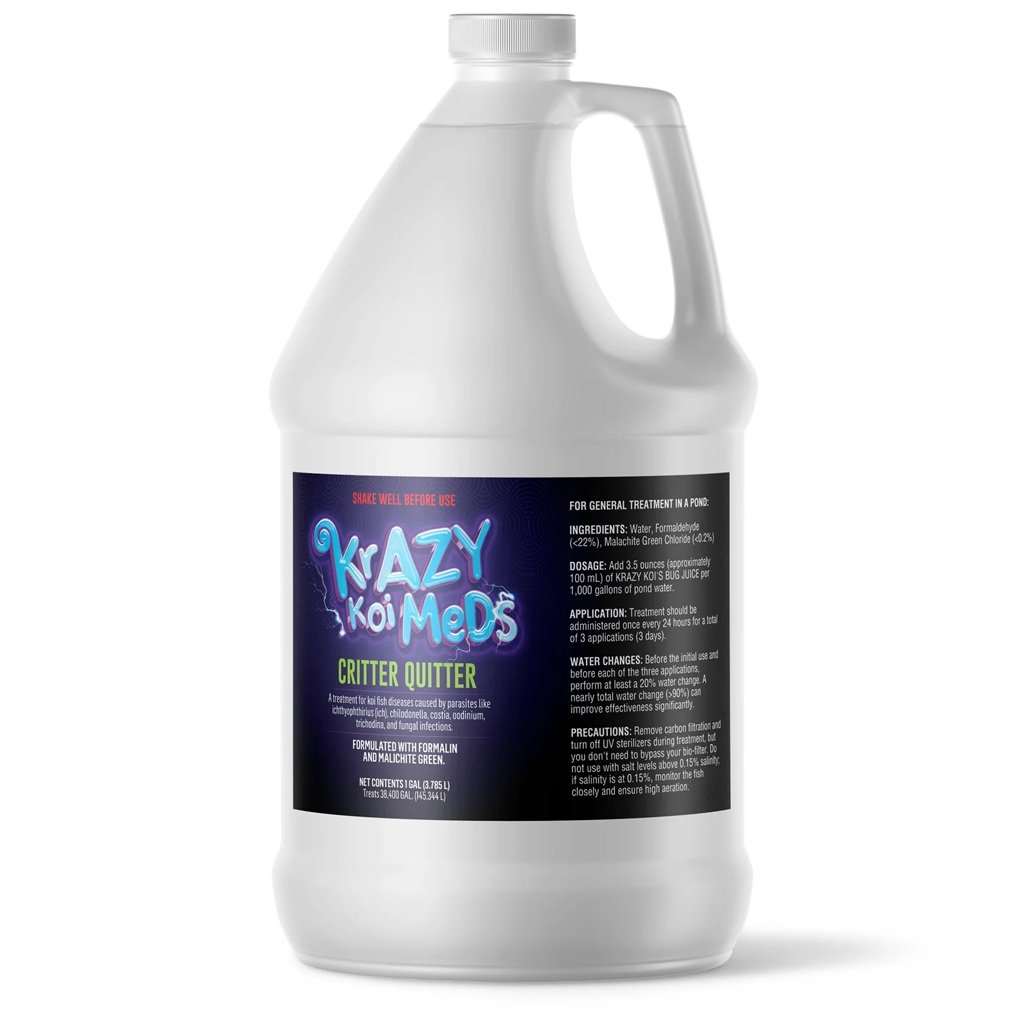Keeping koi healthy requires vigilance, as parasites can quickly affect water quality and fish well-being. One of the most common parasites in koi ponds are gill flukes, microscopic flatworms that attack the gills and cause irritation. A telltale sign of their presence is koi flashing, a behavior where koi rub or flick against surfaces to relieve irritation.
This guide explores everything you need to know about gill flukes treatment and koi flashing, including causes, symptoms, and proven methods for prevention and control.
What Are Gill Flukes?
Gill flukes are tiny parasitic worms that attach themselves to the gills of koi, goldfish, and other pond fish. These parasites feed on mucus and gill tissue, causing damage that impacts breathing and increases stress levels in fish.
Key Points:
- Gill flukes reproduce quickly in warm water.
- They are invisible to the naked eye and require a microscope for confirmation.
- If left untreated, they can weaken the immune system, leading to secondary infections.
What Is Koi Flashing?
Koi flashing refers to koi rubbing or scratching their bodies against pond walls, rocks, or other surfaces. While occasional flashing is normal, frequent flashing signals irritation—often due to parasites like gill flukes.
Common Signs of Flashing:
- Rapid rubbing against pond surfaces.
- Erratic swimming or jumping.
- Gasping at the water’s surface if gills are heavily affected.
Symptoms of Gill Flukes in Koi
Recognizing gill fluke infections early is essential. Look for these symptoms:
- Persistent Flashing: Frequent rubbing against objects.
- Respiratory Distress: Gasping at the surface or rapid gill movement.
- Clamped Fins: Koi holding fins close to the body.
- Lethargy: Reduced swimming activity.
- Excess Mucus: Slimy appearance due to the koi’s immune response.
Gill Flukes Treatment for Koi
Treating gill flukes requires an effective anti-parasitic medication and proper pond management.
Step-by-Step Approach:
- Confirm Diagnosis: Use a microscope to identify flukes from a gill scrape.
- Apply Treatment: Use a fluke-specific parasite treatment that targets gill and skin flukes.
- Maintain Water Quality: Good filtration and water changes are critical during treatment.
- Re-treat If Necessary: Some treatments require repeat dosing to break the parasite’s lifecycle.
- Monitor Fish Behavior: Watch for reduction in flashing and improved respiration.
Preventing Gill Flukes and Koi Flashing
Prevention is always better than cure. Follow these practices:
- Quarantine new koi before adding them to your pond.
- Maintain strong water quality with regular testing.
- Avoid overcrowding in the pond.
- Feed koi a balanced diet to boost immunity.
- Perform regular health checks and observe behavior.
Final Thoughts
Gill flukes are a common challenge for koi keepers, but with the right gill flukes treatment and early detection of koi flashing, you can protect your fish and maintain a thriving pond. Proper prevention, observation, and treatment will ensure your koi remain healthy, active, and vibrant.
FAQs
Q1: What causes koi to flash?
A: Koi flashing is usually caused by parasites like gill flukes, poor water quality, or irritation from toxins.
Q2: Can gill flukes kill koi?
A: Yes, if untreated, severe infestations can cause respiratory failure and secondary infections.
Q3: How long does gill fluke treatment take?
A: Treatment length depends on the product used and water temperature. Multiple treatments may be necessary.
Q4: Can gill flukes spread to other fish?
A: Yes, flukes are highly contagious and can quickly spread throughout a pond.
Q5: How can I prevent koi flashing in the future?
A: Maintain good water quality, quarantine new fish, and use preventive health checks.







